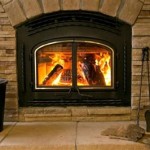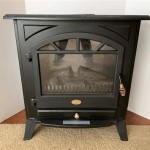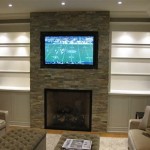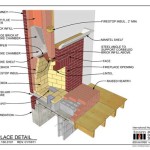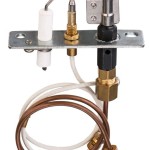Fireplace Mantel Pieces: A Comprehensive Guide Fireplace mantel pieces are architectural elements that serve both functional and aesthetic purposes. They frame the fireplace opening, providing a visual focal point in a room and offering a surface for displaying decorative items. The mantel's design, material, and construction can significantly influence the overall style of a space, ranging from rustic and traditional to modern and minimalist. This article provides a detailed exploration of fireplace mantel pieces, covering their history, types, materials, installation, and maintenance, assisting readers in making informed decisions for their homes.
The historical significance of fireplace mantels dates back centuries. Originally, mantels were primarily functional, designed to catch smoke and prevent it from spreading into the room. These early mantels were often simple, projecting shelves made of stone or wood. Over time, as heating technology improved and fireplaces became more decorative, mantels evolved into elaborate architectural features. Intricate carvings, moldings, and decorative elements were incorporated, reflecting the prevailing architectural styles of each era. Grand homes and estates often featured ornate mantels crafted from expensive materials such as marble and exotic woods, signifying wealth and status.
In the Victorian era, fireplace mantels became particularly elaborate, characterized by intricate detailing, dark wood finishes, and ornate hardware. The Arts and Crafts movement in the late 19th and early 20th centuries brought a shift towards simpler, more natural designs, emphasizing handcrafted elements and natural materials. The mid-century modern period saw a move towards minimalist designs, with clean lines and a focus on functionality. Today, fireplace mantels encompass a wide range of styles, reflecting diverse tastes and architectural preferences.
Key Considerations When Choosing a Fireplace Mantel
Selecting the right fireplace mantel involves careful consideration of several factors, including the style of the home, the dimensions of the fireplace and surrounding area, the material of the mantel, and the desired aesthetic. It is crucial to assess these considerations to ensure that the mantel complements the room's overall design and functionality.
Firstly, consider the architectural style of the home. A modern home, for instance, might benefit from a sleek, minimalist mantel made of concrete or metal, while a traditional home may be better suited to a wooden mantel with ornate carvings. Matching the mantel's style to the home's overall design creates a cohesive and harmonious look. In instances where the home leans towards a transitional design incorporating elements of both contemporary and more traditional styles, a more tailored mantel can be specifically designed to match that style.
Secondly, the dimensions of the fireplace and the surrounding area are crucial. The mantel should be proportioned appropriately to the fireplace opening and the size of the room. A mantel that is too large can overwhelm the space, while one that is too small may appear insignificant. Accurate measurements are essential to ensure a proper fit.
Finally, consider the desired aesthetic and functionality. Do you want the mantel to be a prominent focal point in the room, or a subtle accent? How will the mantel be used – for displaying decorative items, as a support for a television, or simply as a decorative element? Defining these objectives helps narrow down the options and select a mantel that meets both aesthetic and functional needs.
Types of Fireplace Mantel Materials
The choice of material significantly impacts the appearance, durability, and maintenance of a fireplace mantel. Common materials include wood, stone, and metal, each offering unique characteristics and aesthetic qualities.
Wood is a popular choice for fireplace mantels due to its versatility, warmth, and natural beauty. Various types of wood can be used, including hardwoods like oak, maple, and cherry, as well as softwoods like pine and fir. Hardwoods are generally more durable and resistant to damage, while softwoods are more affordable and easier to work with. Wood mantels can be stained, painted, or left natural to suit different design preferences. However, wood is flammable and must be installed with adequate clearance from the fireplace opening to prevent fire hazards. Regular maintenance, such as dusting and occasional refinishing, is required to keep wood mantels in good condition.
Stone mantels offer a timeless and elegant look, adding a sense of grandeur to any room. Common types of stone used for mantels include marble, granite, limestone, and slate. Marble is known for its luxurious appearance and intricate veining, while granite is highly durable and resistant to heat and scratches. Limestone offers a more subtle and natural look, while slate provides a unique texture and color variation. Stone mantels are heavy and require professional installation to ensure proper support. They are also relatively expensive compared to wood or metal mantels.
Metal mantels offer a modern and industrial aesthetic, providing a sleek and minimalist look. Common metals used for mantels include steel, iron, and copper. Steel mantels are durable and heat-resistant, while iron mantels offer a more rustic and traditional look. Copper mantels provide a warm and unique color that develops a patina over time. Metal mantels can be powder-coated or painted to achieve different finishes. They are relatively easy to clean and maintain, requiring only occasional dusting. Metal mantels can be a good choice for contemporary homes or spaces where a modern look is desired.
Installation and Maintenance of Fireplace Mantels
Proper installation and regular maintenance are essential to ensure the longevity and safety of a fireplace mantel. Improper installation can lead to structural issues and fire hazards, while neglecting maintenance can result in damage and deterioration.
Installation of a fireplace mantel should ideally be performed by a qualified professional, especially for heavy mantels made of stone or masonry. The installation process involves several steps, including preparing the wall, attaching the mantel to the wall using appropriate fasteners, and sealing any gaps or cracks. It is crucial to ensure that the mantel is level and securely attached to the wall to prevent it from shifting or falling. Building codes and safety regulations should be followed to ensure compliance and prevent fire hazards. Adequate clearance between the mantel and the fireplace opening is necessary to prevent the mantel from overheating.
Regular maintenance is essential to keep the fireplace mantel in good condition. Dusting the mantel regularly prevents the accumulation of dirt and grime. Wood mantels may require occasional refinishing to maintain their appearance and protect the wood from moisture and damage. Stone mantels should be cleaned with a mild soap and water solution to remove stains and dirt. Metal mantels can be cleaned with a damp cloth to remove dust and fingerprints. Avoid using harsh chemicals or abrasive cleaners, as they can damage the mantel. Inspect the mantel regularly for signs of damage, such as cracks, chips, or loose fasteners, and repair them promptly to prevent further deterioration.
For wood mantels, be especially vigilant about potential insect infestations like termites or carpenter ants. Regular inspection and treatment, if necessary, are crucial for preserving the integrity of the wood. Consider applying a fire-retardant coating to wood mantels. While this doesn't make the wood fireproof, it can slow the spread of flames and give you more time to react in the event of a fire.
When cleaning stone mantels, avoid using acidic cleaners like vinegar or lemon juice, as they can etch the surface of some stones like marble. Instead, use a pH-neutral cleaner specifically designed for stone. For metal mantels, consider applying a protective coating to prevent rust and corrosion, especially in humid environments. Regularly check the fasteners securing the mantel to the wall, and tighten them as needed to prevent the mantel from becoming loose or unstable.
The selection of a fireplace mantel is a crucial decision that impacts the overall aesthetic and functionality of a room. Consideration of the home's style, fireplace dimensions, and desired aesthetic assists in informed decision-making. Careful installation and maintenance ensure longevity and safety, transforming the fireplace into a visually appealing and functional focal point for years to come.

Fireplace Mantels Mantel Shelves Custom Surrounds And More Direct

Reclaimed Antique Wood Mantel Pieces

Why Wooden Fireplace Mantels Are Simply The Best

Mantel Piece

Fireplace Mantels Mantel Shelves Custom Surrounds And More Direct

54 Mantel Decorations Ideas For Holiday Fireplace Decorating

Inspiration Memorable Mantelpieces Canvas A Blog By Saatchi Art
:max_bytes(150000):strip_icc()/cozy-fall-mantel-decorating-5dfcd9f83cbc45c9ab67357fe2b52b40.jpeg?strip=all)
28 Fall Mantel Decorating Ideas To Make Your Hearth More Homey

Reclaimed Antique Wood Mantel Pieces

36 Fireplace Decor Ideas Modern Mantel
Related Posts

